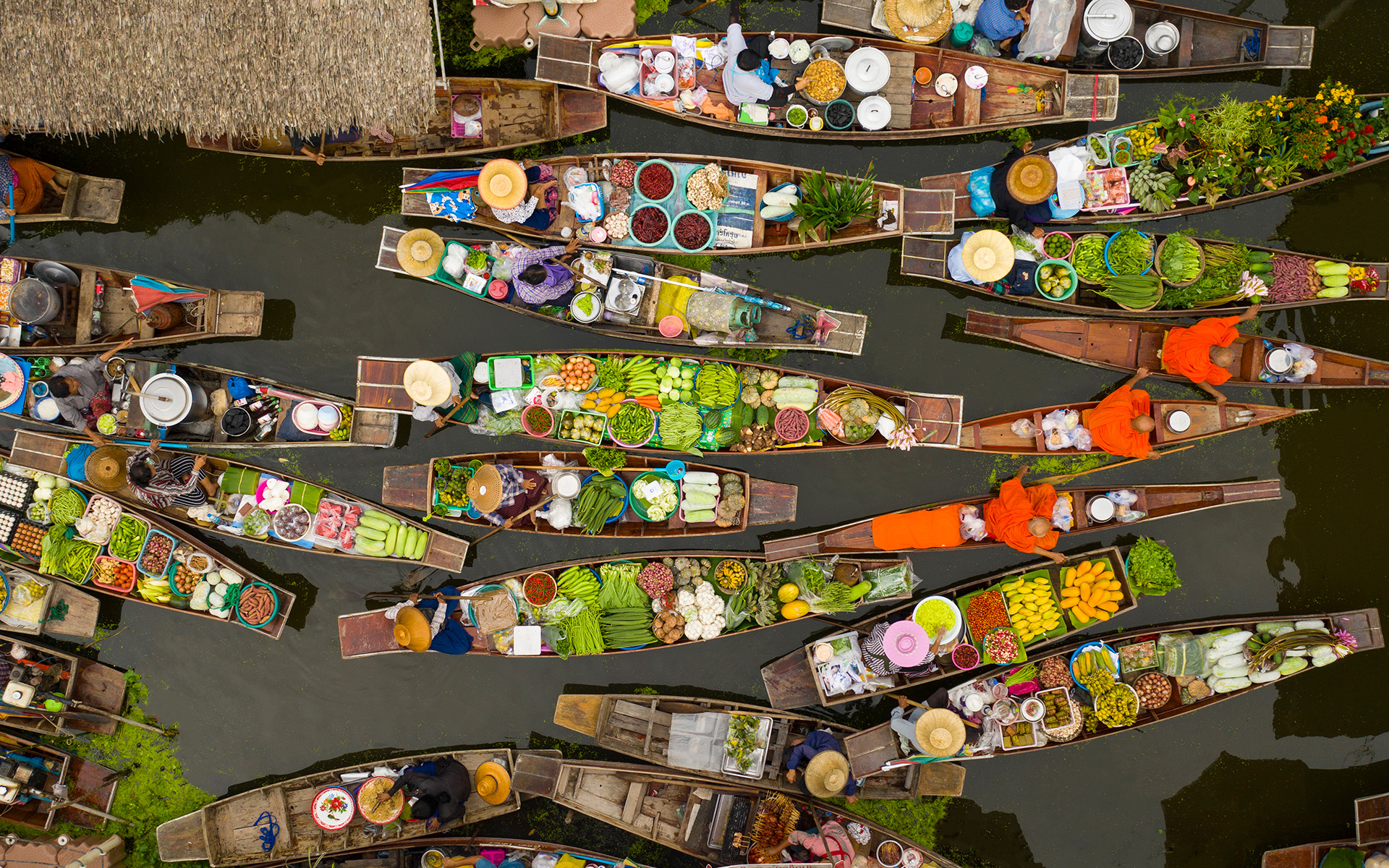An exciting mix of business, manufacturing, and tourism lifts Bangkok high in our rankings, as the city thrives in a world of supply chain disruption and geopolitical shifts.
City Class Score
| Commercial Hubs | |
| Export Champions | |
| Mobility Connectors | |
| Climate Resilient |
Corporate HQs, MNC presence, branded outlets, hotels, manufacturing, start-up ecosystem,
transport linkages, population, and income.
Go to the class information
Manufacturing, industrial parks, export share and share change by category, air and port
infrastructure, freight time to market, trade agreements, and expert interviews.
Go to the class information
Passenger traffic, flight connectivity, air-cargo flights, port infrastructure, container
ship sailings, and major road networks.
Go to the class information
Coastal and river flooding, extreme rain, extreme heat and humidity, cyclones, and water
scarcity.
Go to the class information
The Chao Phraya River has long been the lifeblood of the Thai capital, winding
its way through the heart of the city. Long-tail wooden boats glide gracefully along its canals,
transporting cargo and people while avoiding the clamor of congested streets. The waterway reflects
the city’s rich history, with its banks adorned by a mix of traditional teak houses, their roofs
sloping to fend off monsoon rains, and the majestic Grand Palace, with its golden spires and
intricate mosaics.
As Bangkok solidifies its role as a vital connector for mobility, both
locally and globally, its importance grows. Recent global supply chain disruptions prompted
multinationals to rethink their strategies, shifting production to Thailand to mitigate risks
associated with trade tensions. Meanwhile, companies are expanding their presence in the fastgrowing
members of the Association of Southeast Asian Nations as part of regional growth rebalancing, making
Bangkok an attractive destination for regional capability centers. The two megatrends elevate the
city in our mobility rankings.
Thailand’s stunning sandy beaches often steal the spotlight,
with Bangkok serving as the gateway for nearly 20 million foreign tourists annually. The bustling
Suvarnabhumi Airport welcomes a diverse crowd of holidaymakers and business travelers, receiving
flights from more than 120 international destinations. But it’s not just about global connections;
unlike international airports in Hong Kong or Singapore, Suvarnabhumi and the nearby Don Mueang
Airport also cater to a vibrant domestic market, shuttling travelers to various locales across
Thailand, which boosts the city’s overall ranking compared with peers.
Beyond tourism,
Bangkok and its surroundings boast a thriving manufacturing sector that often goes unnoticed.
Leading Japanese manufacturers like Toyota, Panasonic, and Daikin operate multiple plants just a
short drive from the city. Chinese automotive investors, including the electric vehicle giant BYD,
are also making their mark. The country’s booming air cargo sector coupled with the port of Laem
Chabang, Thailand’s largest, ensures that factories can swiftly ship goods around the globe. It is
this mix of business, manufacturing, and tourism that makes Bangkok a dynamic mobility connector.

